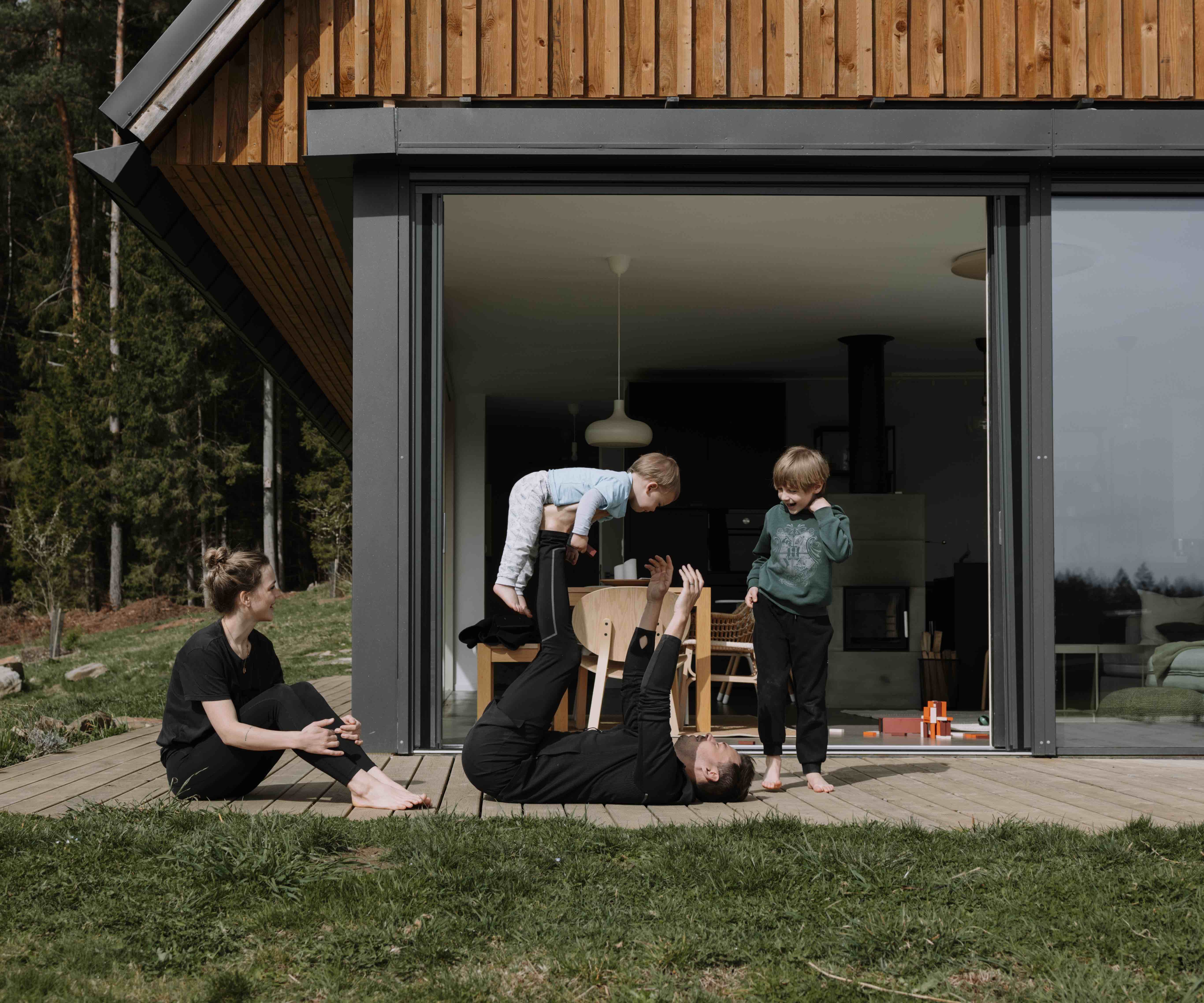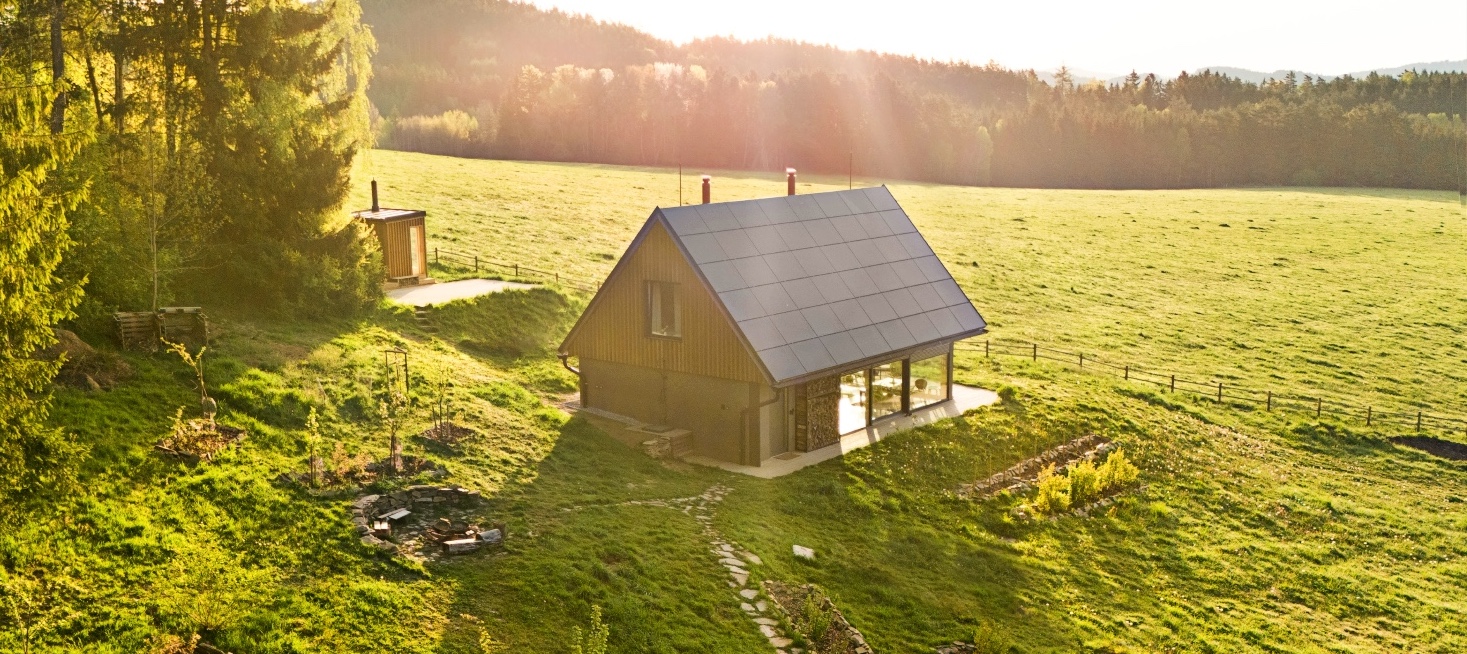
OUTONOMIA is our real, modern, off-grid house with on-grid comfort.
Our family built OUTONOMIA with our own hands as a real-world blueprint for anyone pursuing abundant off grid living — anywhere in the world. Whether you're starting from scratch or upgrading an existing off grid setup, whether it is a family house, homestead, cabin, survival shelter, glamping site, or tiny house, OUTONOMIA is a great source of hard-earned insights and practical, field-tested off grid solutions.

OUTONOMIA — cozy, secluded, comfortable: a beautiful place of freedom.
Our unique story is here to support both off grid realists and dreamers across the U.S., Canada, the Americas, Australia, New Zealand, Europe, Africa, Asia and beyond. Learn from the pros, cons, and real-life lessons we gained while designing, building, and living in the modern off grid home we call OUTONOMIA.

OUTONOMIA’s concept is suitable for any off grid location and project size.
In short: We built OUTONOMIA in a secluded location with no connection to public utility networks, set in a temperate continental climate zone (exact location here). Despite experiencing harsh, snowy winters and mild summers, the house generates 100% of its electricity from the sun and stores it in batteries and a thermal water tank. While we do own a backup generator, our energy system was carefully designed to operate year-round without needing to use it — all while maintaining virtually the same level of comfort as an on grid household.
Moreover, OUTONOMIA collects and purifies as much rainwater as possible, which is then used for flushing, showering, laundry, and many other everyday needs. In contrast, the precious drinking water from our well is consumed sparingly and with care. All used water is then carefully cleaned and fully purified before being returned back to the natural cycle.
Heating is also provided by solar energy, combined with a pellet boiler and a wood stove as backup. Thanks to its insulation and thermal design, OUTONOMIA retains valuable heat exceptionally well — while still offering a comfortable, healthy indoor environment.
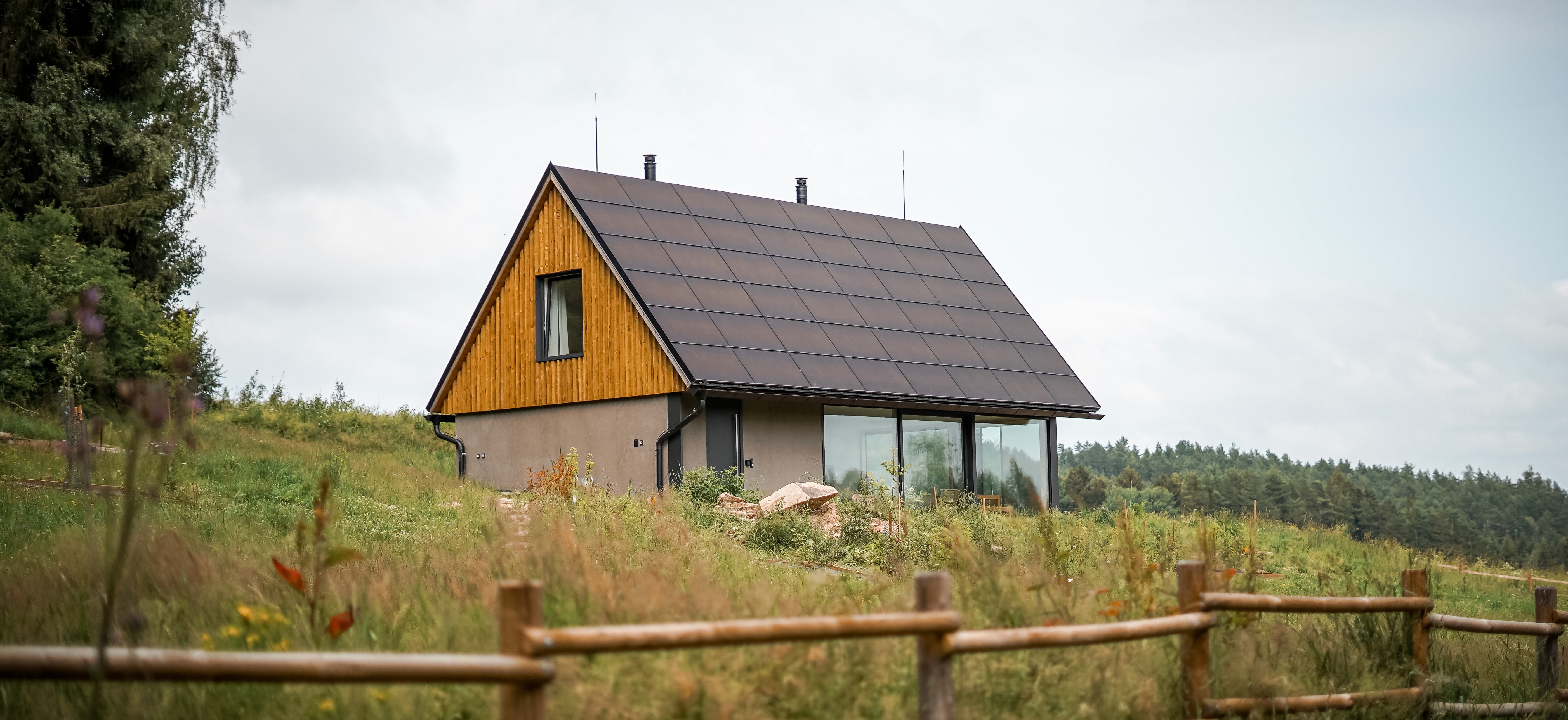
All solar panels are integrated into the south-facing section of the roof.
All of our off-grid systems and solutions were developed and thoroughly tested over several years in less-than-ideal weather conditions for off-grid living. The good news? You can replicate them — fully or partially — in your own off-grid project, no matter the size, location, or climate.
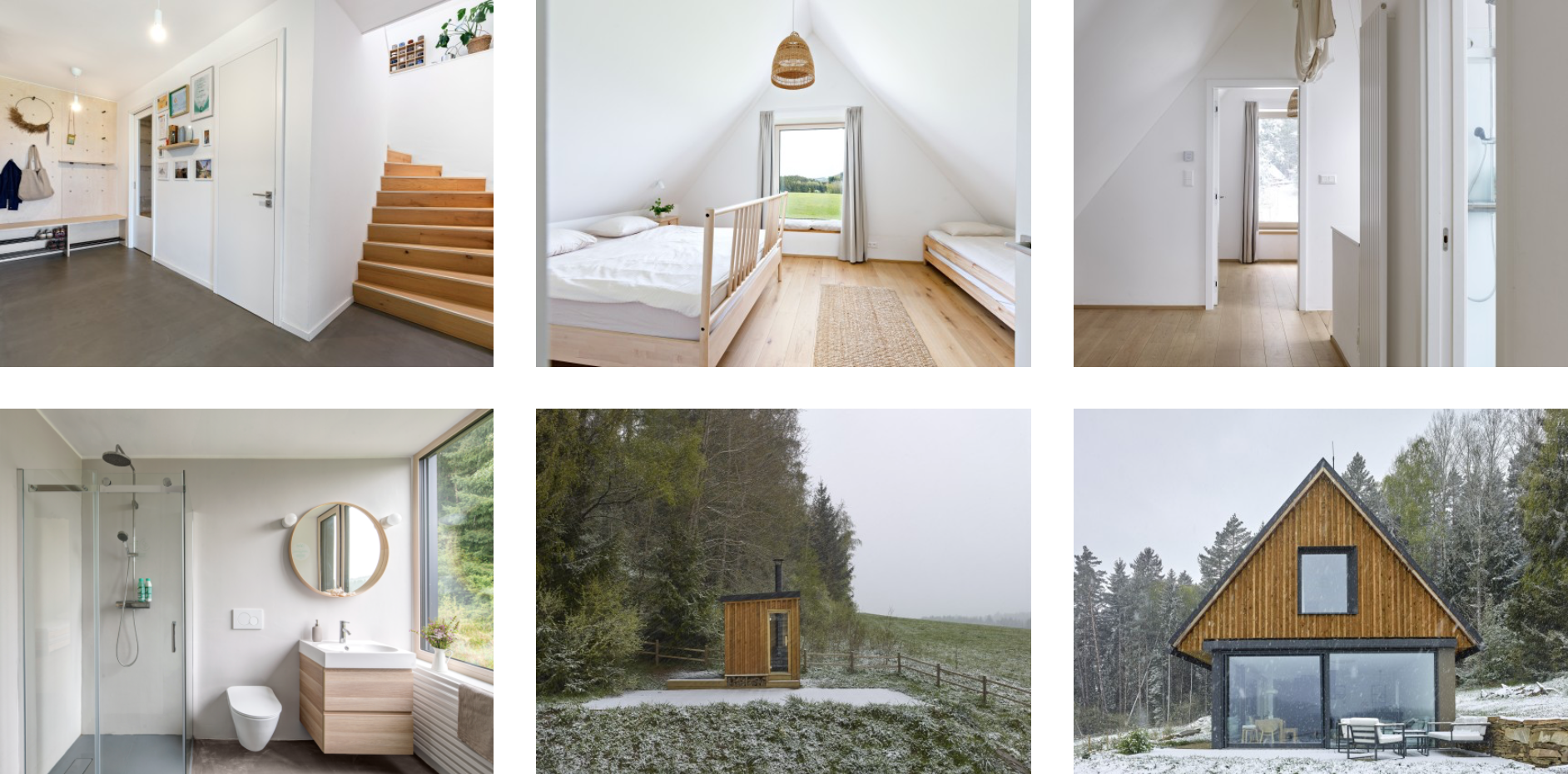
Off-grid living without the hum of a backup generator — in any weather.
Our mission has always been to give other self-sufficiency enthusiasts a tested, and honest roadmap to modern off-grid living — no greenwashing, no gatekeeping, just real experience. It felt only natural to distill all our insights into a book:
OUTONOMIA: How to Build a Modern Off Grid House with On Grid Comfort
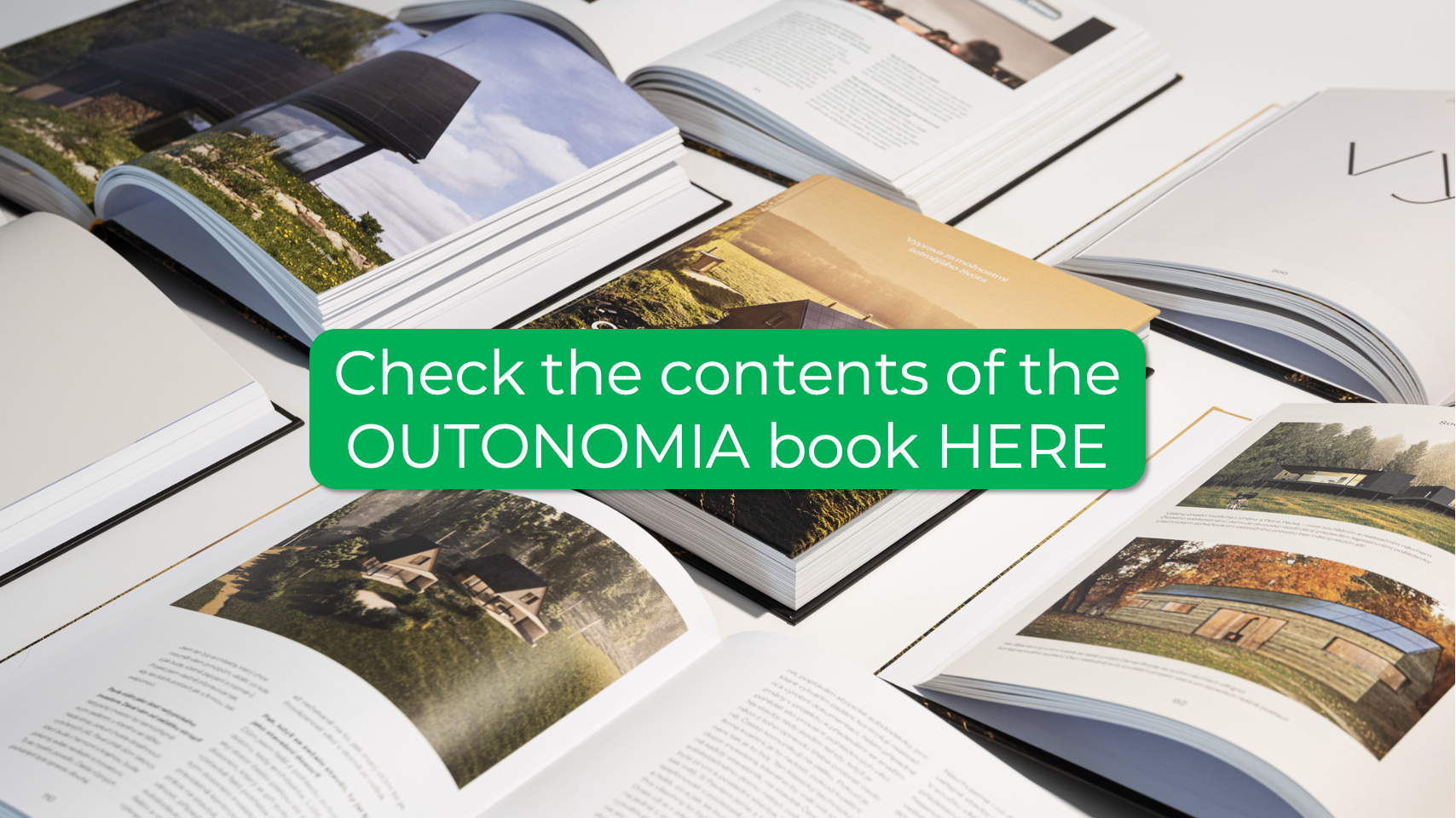
Beyond the detailed book chapters — filled with OUTONOMIA's practical takeaways on off grid architecture, site prep, power systems, water treatment, heating solutions, construction materials, and more — we’ve gone even deeper.
We’ve even published a complete package of technical documentation, blueprints, detailed diagrams, and construction plans for OUTONOMIA. These downloadable PDF files are primarily designed as a recommended (but not necessary) add-on to the in-depth book.
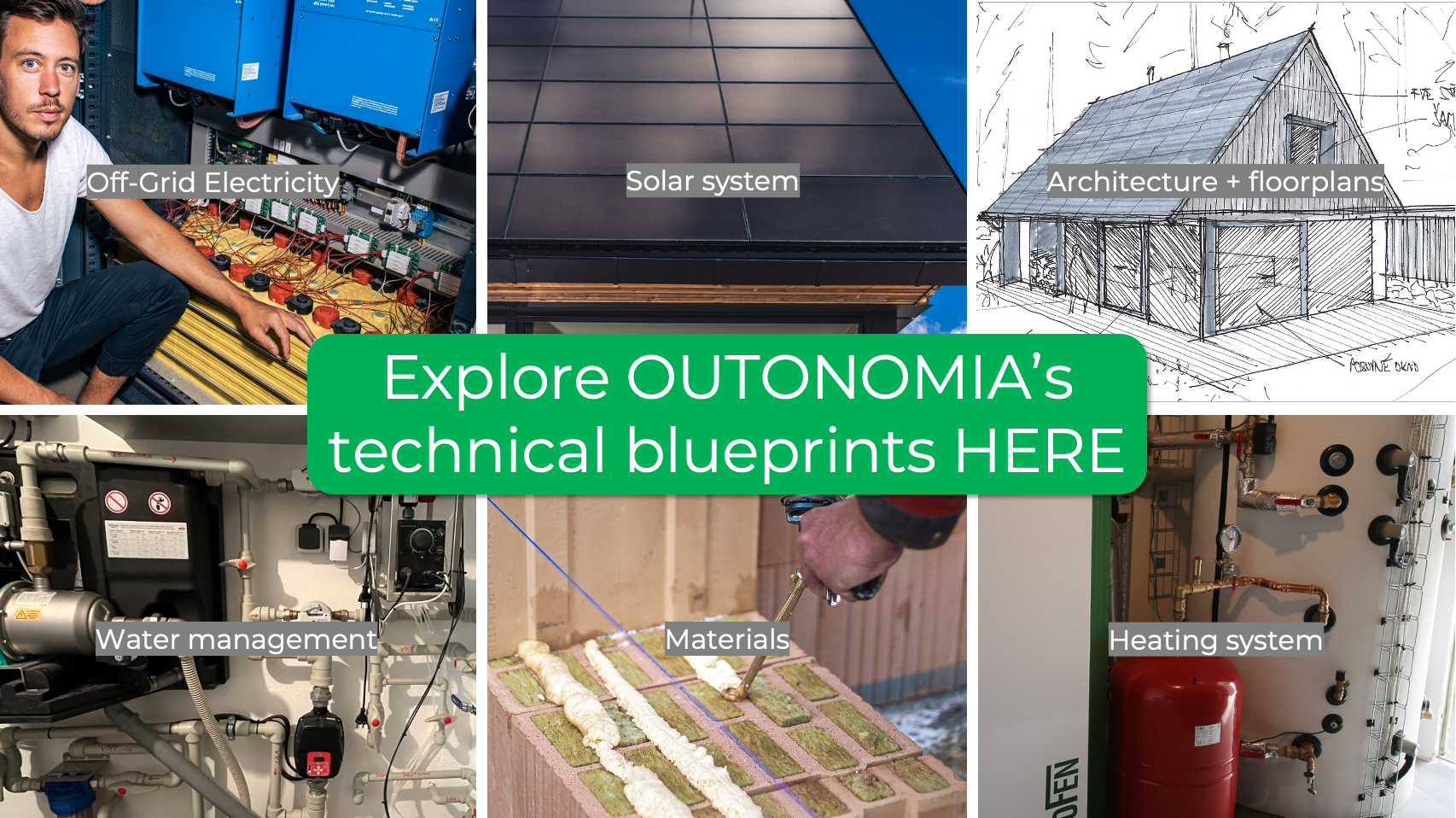

It all started with a beautiful, secluded piece of land that we were lucky enough to buy through a series of fortunate coincidences. It was love at first sight — a place to bring our dreams of freedom, family unity, and self-sufficiency to life.
Our land spans about 43,000 sq ft (4,000 m²) — half open meadow, half forest, no grid. It’s south-facing, ideally exposed to sunlight, and lies outside any environmentally protected zones — something we were mindful of from the very beginning.
The surrounding area is dotted with abandoned farmsteads, long-forgotten villages, and a handful of scattered cabins. This was the place. And right here, we decided to build OUTONOMIA. You can find it on the map [here].

Before we built OUTONOMIA: our plot of land.
It quickly became clear that truly comprehensive and comfortable solutions for modern off grid projects — especially the selection, integration, and control of individual technologies — are still quite rare, and remain a major challenge for most mainstream architects, engineers, and construction companies.
In other words, we couldn’t find anyone with holistic, long-term experience in creating off grid projects that deliver year-round, on-grid-level comfort without heavily relying on backup generators or spartan/survivalist way of living.
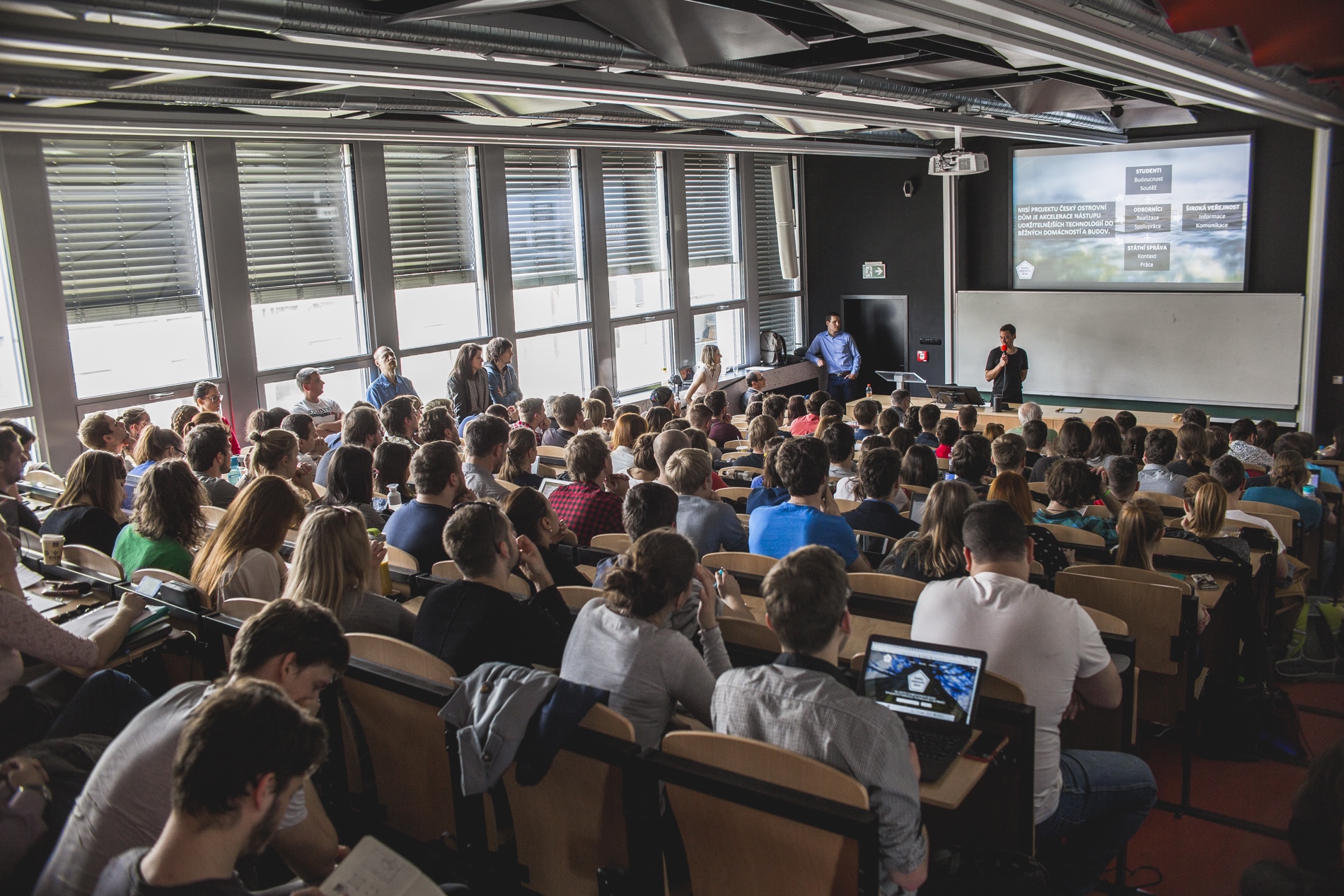
A special occasion: Team OUTONOMIA in one room.
It was inevitable — we had to create our own team. Fortunately, we were able to bring together some of the world’s leading specialists in lithium batteries and solar power systems — professionals with years of hands-on experience in both on grid and off grid solar installations.
We were incredibly lucky that something about OUTONOMIA resonated with people from the very beginning, and as more technical experts joined the project, the team kept growing — allowing us to fine-tune every detail of the house and its technology systems.
In total, around 70 people from various fields helped bring OUTONOMIA to life- They all contributed completely free of charge, purely for the challenge and the shared vision behind it. In the end, OUTONOMIA is a fully crowd-funded, crowd-sourced, and crowd-built house — a true collective effort.
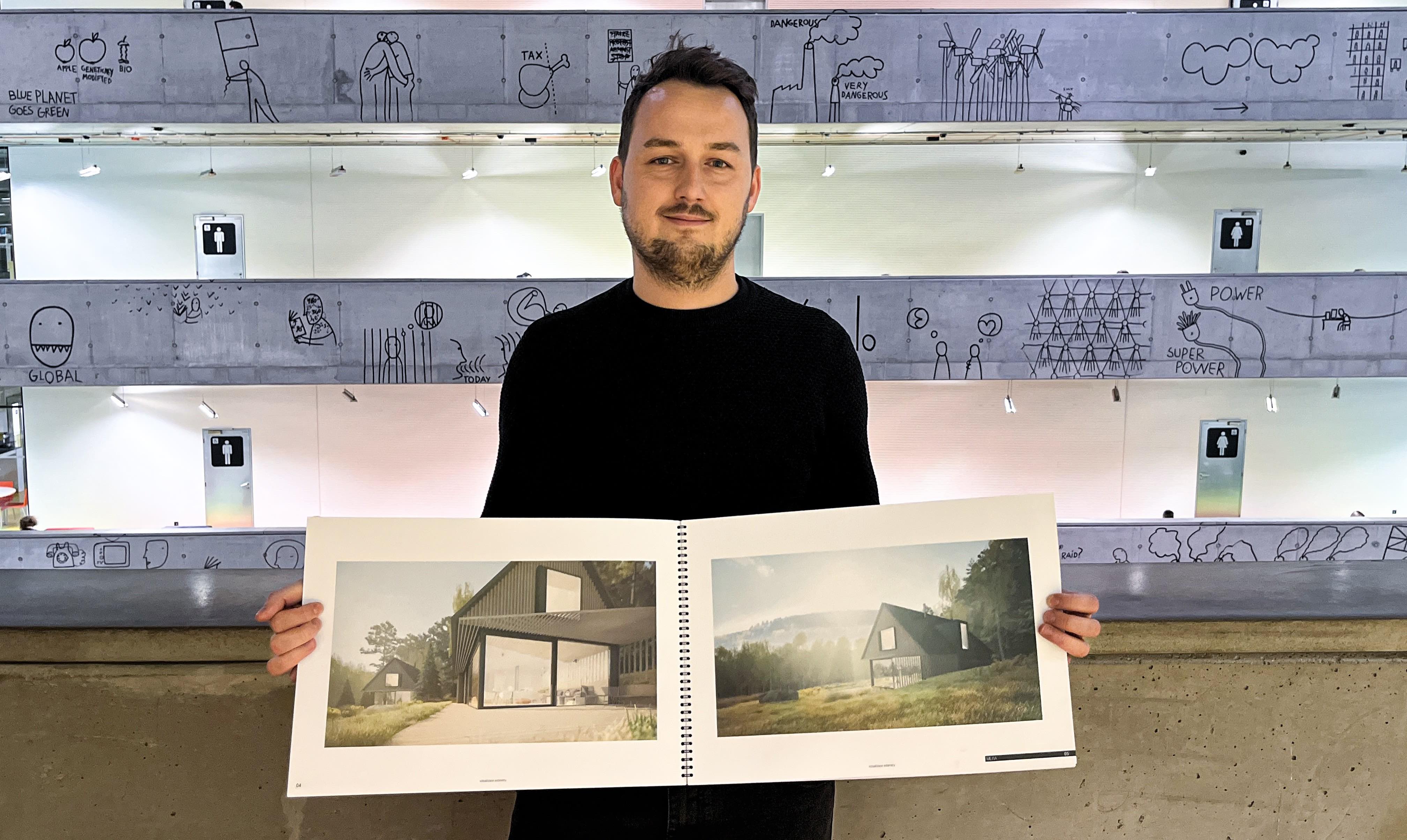
This is Vojtech Lichy, the architect of OUTONOMIA
The selection of technologies in OUTONOMIA was primarily based on projected electricity consumption — a critical factor for any project operating fully off the grid.
OUTONOMIA’s sole source of power is a photovoltaic system with an installed capacity of 15 kWp, supported by a redundant inverter cascade and 22 kWh of lithium iron phosphate (LiFePO₄) battery storage.
Solar panels cover the entire south-facing slope of the gable roof, which is built with a ventilated double-layer structure. The north-facing slope is finished with black ceramic tiles typical of our region.
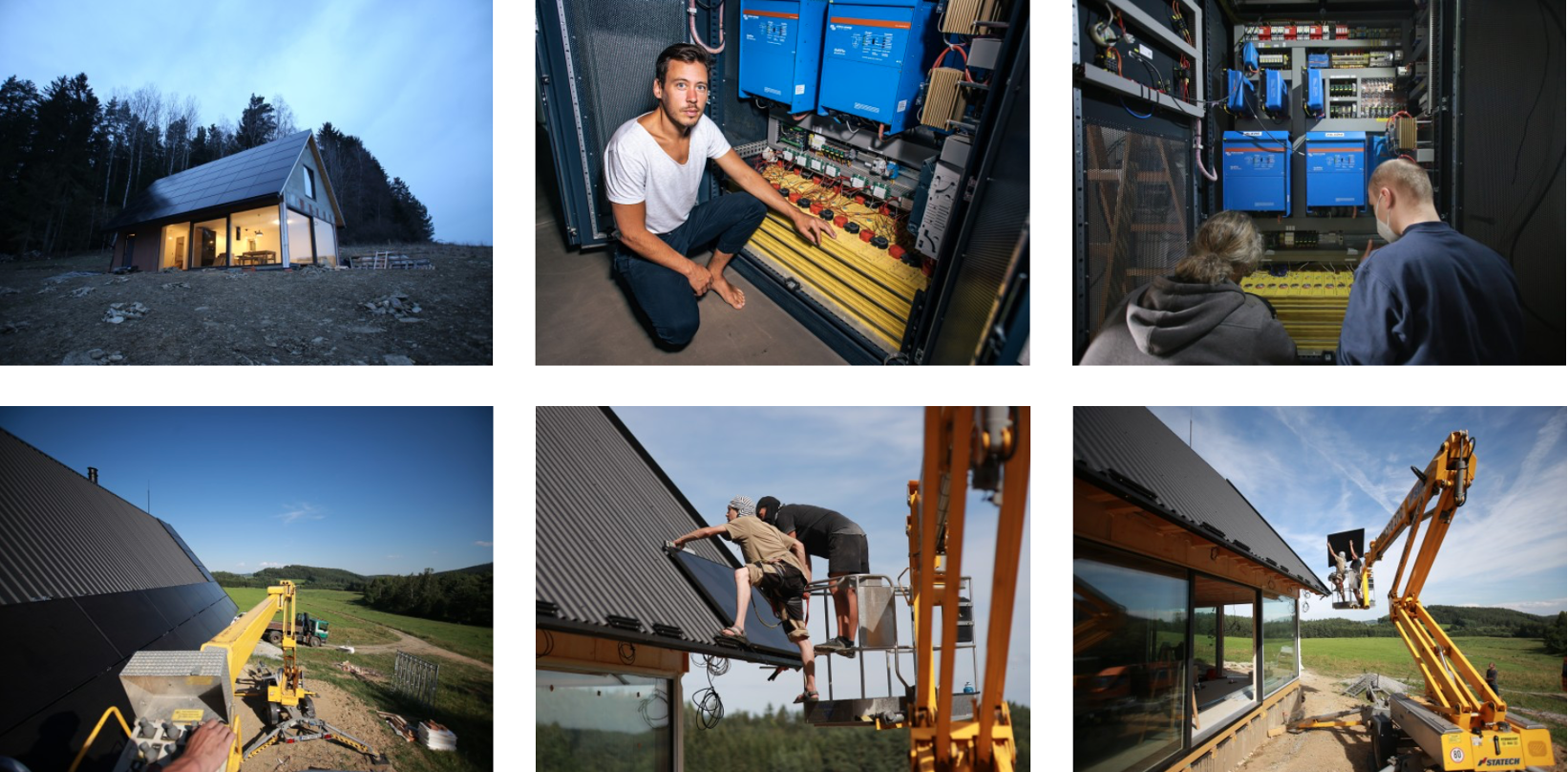
Off-Grid solar system: the heart and soul of OUTONOMIA.
Electricity from the solar panels also heats 265 gallons (1,000 liters) of water in our thermal storage tank, providing both space heating and hot water for OUTONOMIA.
During the colder months (in our case, typically November through March), when solar output naturally decreases, our pellet boiler automatically kicks in to supplement the tank with additional heat — something an off-grid project closer to the equator likely wouldn’t need at all. OUTONOMIA’s pellet consumption averages only around 1,300 pounds (600 kg) per year.
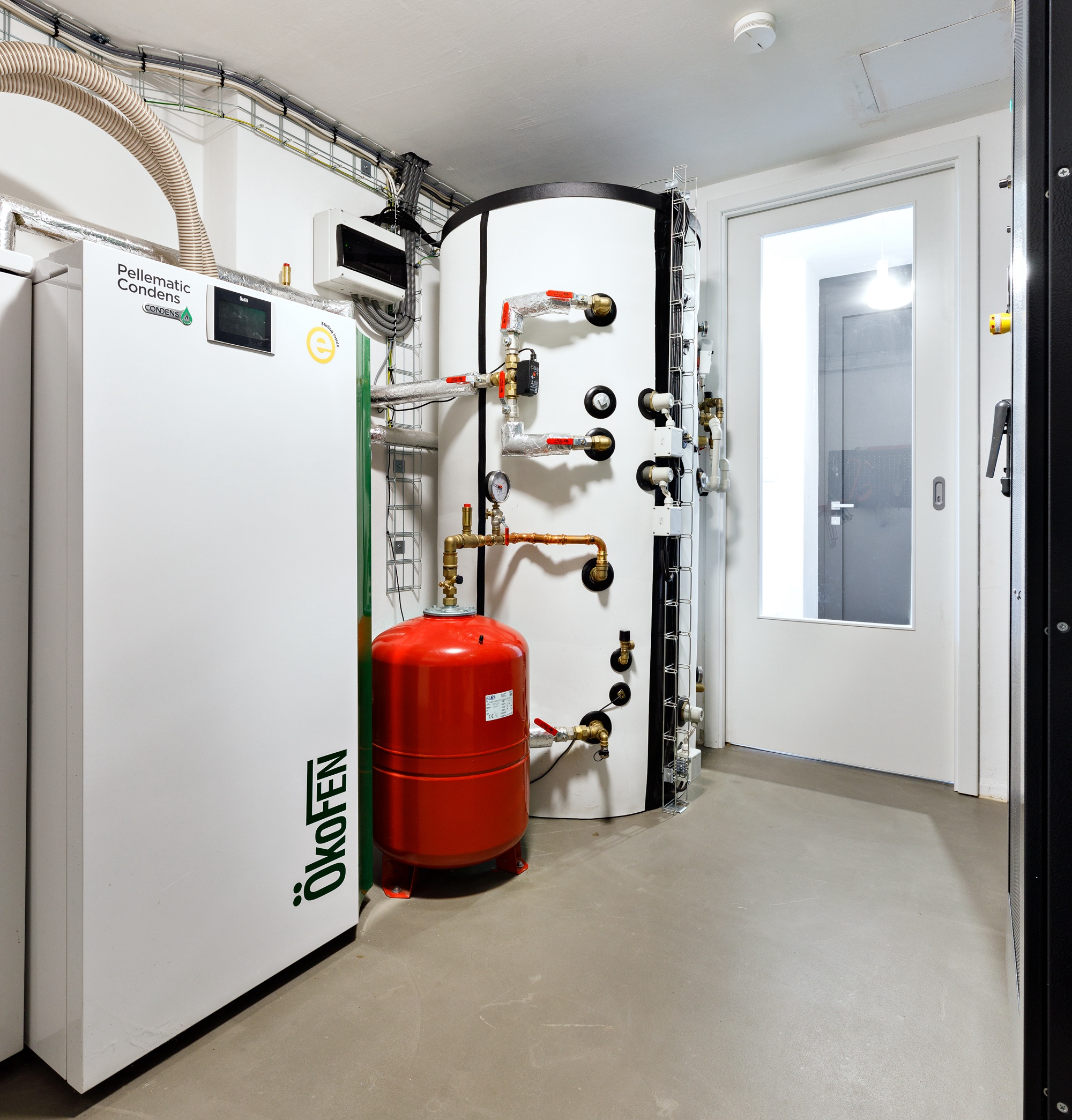
The automatic pellet boiler and thermal tank inside OUTONOMIA.
The top priority in designing our water management system was to minimize the use of potable water from our on-site well. That’s why we harvest all rainwater from the OUTONOMIA's roof and store it in a 4,200-gallon (16,000-liter) underground tank.
After passing through non-chemical nanofiber filtration, the rainwater is used for toilet flushing, laundry, and even partially for showering. During dry periods, the system can automatically switch to well water — though in practice, this has never been necessary.
All resulting wastewater is processed through a biomechanical treatment system and safely reabsorbed into the ground on-site, completing the natural water cycle.
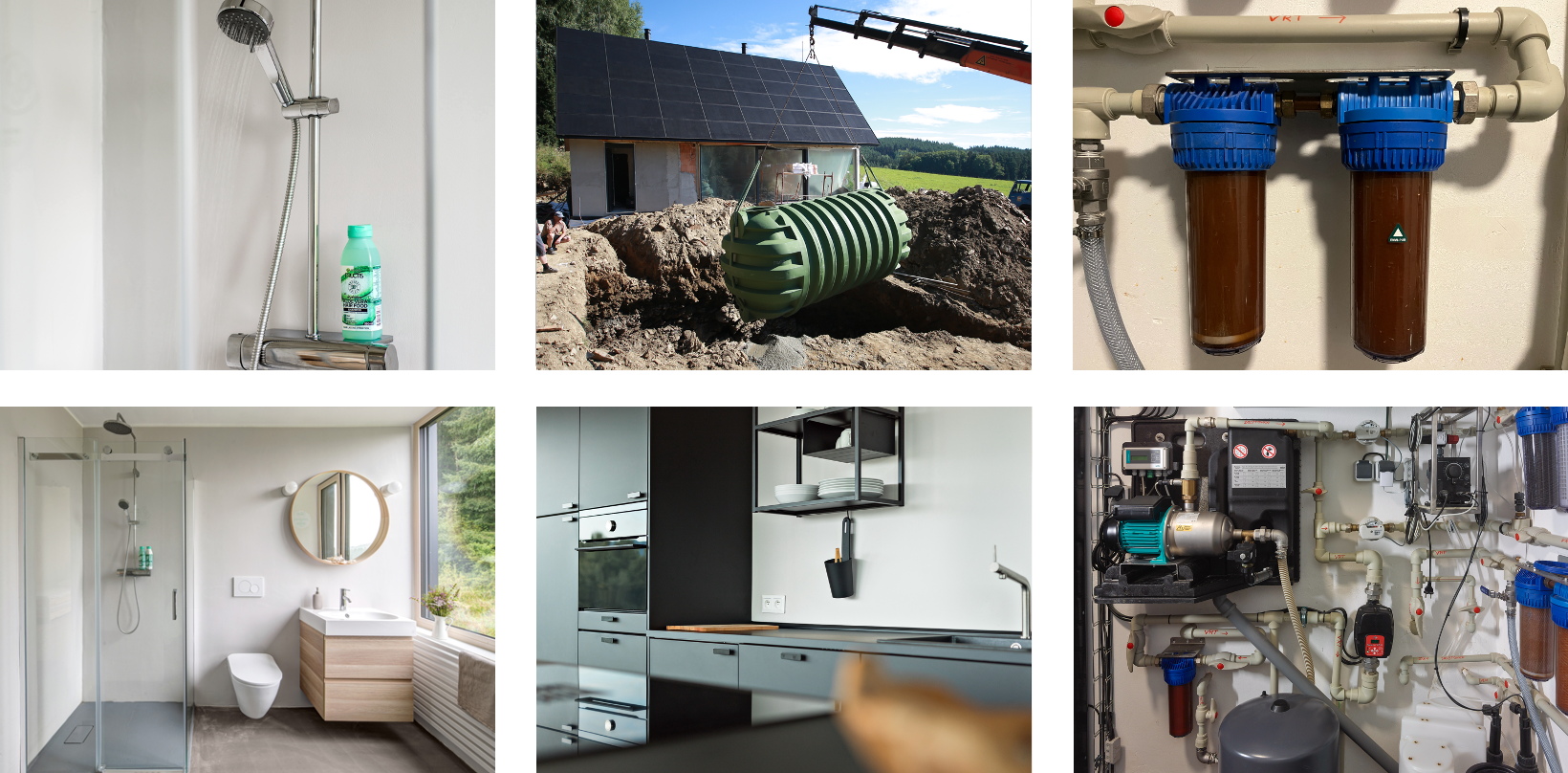
OUTONOMIA’s off-grid water management.
OUTONOMIA has a rectangular footprint of 875 sq ft (81.27 m²) and offers a total of 1,248 sq ft (116 m²) of living space, divided between the ground floor and loft.
It could have been a timber-frame house, a straw bale structure, a 3D-printed home made from recycled plastic, or even an earth house. But what matters most is that the technological systems we used can function just as effectively in any type of construction.
Our goal was to design a small, durable home built to last. That’s why we chose a time-tested, all-ceramic wall structure. The exterior walls are made from locally sourced, precision-milled bricks filled with mineral wool insulation — helping minimize energy consumption and maintain consistent thermal comfort year-round.
We also installed wood-aluminum windows with triple glazing and used modern insulation materials across the foundation, façade, ceilings, attic, and floors. OUTONOMIA’s total heat loss is approximately 6.5 kW at 0°F (-18°C).

We laid every single brick with our own hands.
As we’ve mentioned before, we intentionally designed OUTONOMIA’s technology systems to be highly replicable (or easily adjustable) for off-grid projects of any size, in any climate zone. The core challlenges of off-grid living are the same around the world.
Planning OUTONOMIA took us four full years. Building it took two more. Along the way, we brought together a passionate team of top experts and enthusiasts from both academia and private practice — and with them, we quite literally raised the house from the ground up.
We’re not claiming to have built a perfect model of sustainability. This isn’t a miracle solution. What we’ve created is simply the very best we were able to imagine and bring to life — using every bit of our physical, mental, and financial strength to make it real and share it with the world.
Aside from the most specialized tasks, we did almost all the physical work on OUTONOMIA ourselves — start to finish — to keep it as honest, hands-on, and replicable as possible.
Of course, OUTONOMIA isn’t 100% self-sufficient in every respect. It’s not flawless, and it doesn’t pretend to be. But we’re proud of what we’ve built — and even more grateful that we can be useful to you by openly sharing every step of our journey in this book:
OUTONOMIA: How to Build a Modern Off Grid House with On Grid Comfort

Furthermore, this downloadable package of technical documentation, blueprints, detailed diagrams, and construction plans for OUTONOMIA is strongly recommended — but not required — as an add-on to the in-depth book.


This is us — the family behind OUTONOMIA. Pavel & Kristyna Podruh, with our kids Adam and Robin. We truly hope that everything we’ve been through on our off-grid journey can be useful to others. This house brought us together and made us a family. We’ll always be grateful for the experience and for the result.
